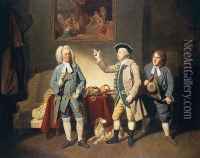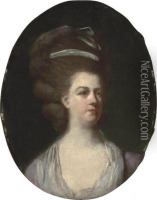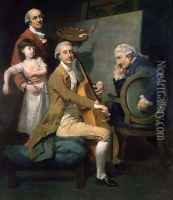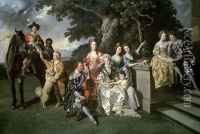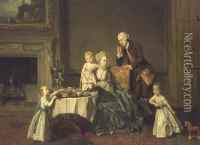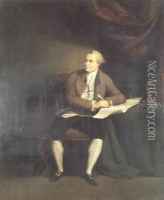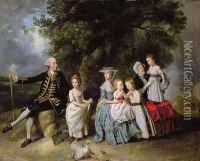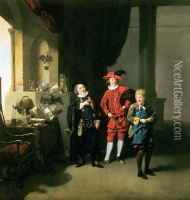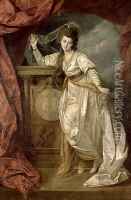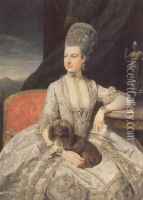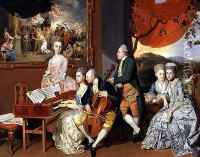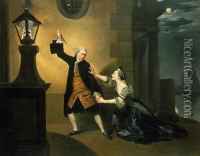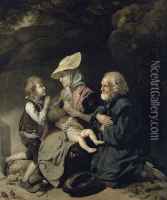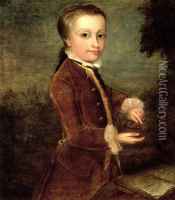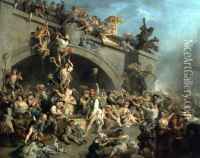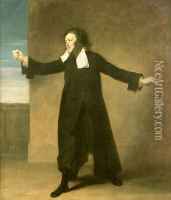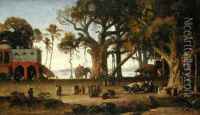Johann Zoffany Paintings
Johann Zoffany, also spelled Zoffani, was a notable German neoclassical painter, active mainly in England during the 18th century. Born Johannes Josephus Zaufallij in Frankfurt-on-Main in 1733, he later anglicized his name after moving to England. Zoffany received his initial training in his homeland, but his artistic career truly blossomed after he moved to London in the 1750s.
Upon his arrival in England, Zoffany quickly found patronage under the actor David Garrick, which allowed him to gain prominence as a portraitist, capturing the theatrical elite of the time. His paintings were known for their fine detail, vibrant colors, and the ability to capture the character of his sitters. Zoffany became particularly famous for his 'theatrical conversations' – group portraits of actors on stage, which were a novelty at the time and highly sought after.
His reputation grew, and he became associated with the royal court when King George III commissioned him to paint the royal family. This royal patronage elevated his status, and he was a founding member of the Royal Academy in 1768. However, Zoffany's relationship with the royal family soured due to a misunderstanding over a painting, and this led him to seek work elsewhere. He traveled to Italy and later to India, where he painted the European and colonial elite, as well as local scenes.
Zoffany's work provides a valuable historical record of the social and cultural life of the period. His portraits are celebrated not just for their artistic merit but also for their documentary value, depicting social gatherings, theater scenes, and the interiors of the time with meticulous accuracy. Zoffany's later works in India also show a cross-cultural exchange, as he incorporated Indian elements into his European artistic style.
Zoffany returned to England in the late 1780s and continued to work until his death in 1810. His legacy is that of a painter who managed to capture the spirit of the Age of Enlightenment with a blend of realism and wit. His works are held in many major art collections and continue to be studied for their art historical significance as well as their insight into 18th-century life.
